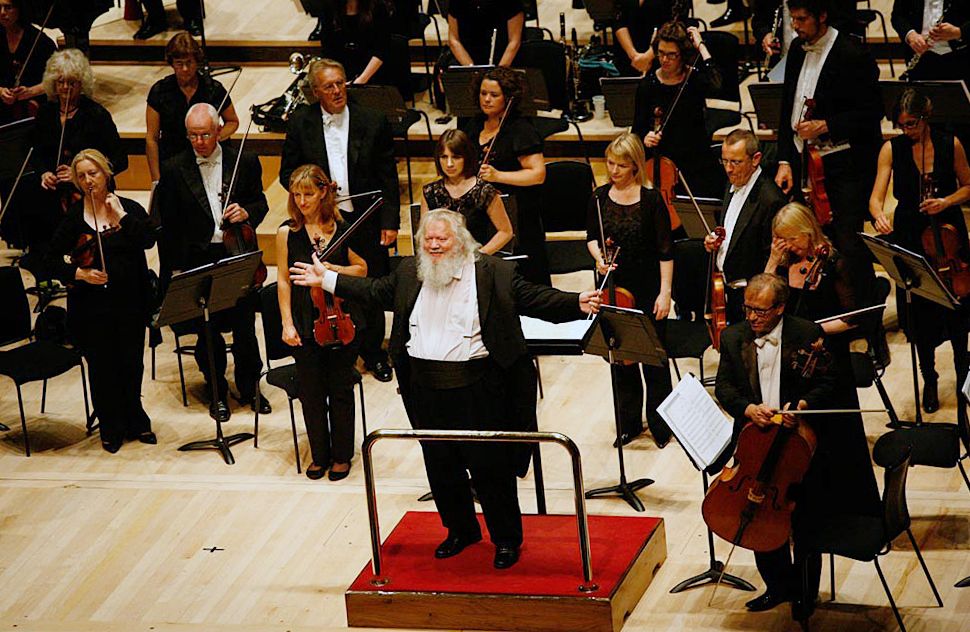
On October 9, Finnish maestro Leif Segerstam bid farewell at the age of 80. A free spirit and eccentric, he left a profound mark on the classical music landscape by conducting the most prestigious orchestras in his unique style and composing over 370 symphonies.
Leif Segerstam, the Finnish maestro, passed away on October 9 at the age of 80. Known for his unconventional approach to conducting and boundless energy, he leaves behind a rich and vibrant musical legacy. Born on March 2, 1944, in Vaasa, Finland, Segerstam made a significant impact on the world of Western art music through his passionate interpretations of orchestral works. As the artistic director of several prestigious ensembles, including the Finnish Radio Symphony Orchestra and the Helsinki Philharmonic Orchestra, he breathed new life into masterpieces of the classical repertoire while exploring a wealth of post-modern pieces. Segerstam's eccentric personality, combined with his insatiable musical curiosity, frankness, and endless creativity, characterized his unique artistic journey, placing him among the most distinctive and sometimes controversial figures in classical music.
The Jesus of Music
With one hand lightly resting on the music stand and the other raised in a gesture that already seemed to speak to the music, the Finnish maestro commanded the stage even before the first notes came to life. His long white hair, gently floating with his movements, formed a luminous halo around his serene face—a blend of Johannes Brahms and Karl Marx. “I am almost like the Jesus of music,” he even claimed. “In the world of music, I hold truths as precious as the teachings of Jesus.” His full beard added to his sage-like aura, evoking both Santa Claus and an ancient druid, rooting his persona in a realm both familiar and mystical. In his fluid movements, he exuded a natural grace. Segerstam didn’t simply conduct; he engaged in a true act of creation. And when the music surged forth, he surrendered himself to it entirely. The musicians followed his every gesture with an almost religious attentiveness, like children captivated by the tales of a storyteller.
Intuitive Approach
Segerstam was immersed in a musical environment from a young age. He first studied violin and viola, playing in the Helsinki Youth Orchestra. His musical studies later expanded to piano and conducting, which he pursued at the Sibelius Academy in Helsinki and then at the Juilliard School in New York. In 1963, he made his conducting debut with Rossini’s The Barber of Seville in Tampere, a city in southern Finland. This performance marked the beginning of a career that would eventually see him become the Artistic Director of the Royal Opera in Stockholm in 1968, paving the way for him to grace some of the world’s most prestigious stages. Over the following decades, he broadened his influence internationally, conducting at major opera houses such as the Deutsche Oper in Berlin, the Met in New York, Covent Garden in London, La Scala in Milan, and the Vienna Staatsoper. His unique style, characterized by great expressiveness and an intuitive approach to music, allowed him to shape memorable interpretations that resonated deeply with both audiences and musicians.
Symphonic Repertoire
From the 1970s onward, Segerstam devoted himself more to the symphonic repertoire, serving as principal conductor of the Austrian Radio Symphony Orchestra until 1982, and then of the Finnish Radio Symphony Orchestra from 1977 to 1987. His growing reputation opened doors on international stages, where he led major orchestras across the globe, from Chicago to Tokyo, and through cities such as London, Paris, Brussels, Geneva, Munich, Bonn, Madrid, and Lisbon, to name a few. His repertoire spanned widely, from the romantic music of Johannes Brahms and Gustav Mahler to the modern works of Carl Nielsen and Karl Birger Blomdahl. However, his interpretations of Jean Sibelius's music revealed a special richness, combining emotional power with a deep mastery of the nuances within the score. The young director of the Orchestre de Paris, Klaus Mäkelä, once referred to him as “the greatest of the Sibelians.”
Nonconformist Composer
Segerstam, however, had more than one string to his bow. In addition to being a renowned conductor, he was also a prolific composer. By the time of his passing, his catalog included 371 symphonies, most of which are relatively short, around twenty minutes, designed to be performed without a conductor. As a composer, he aimed to recreate the spirit of chamber music within the orchestra, while exploring a form of aleatoric music (using his own term, "free pulsation"), allowing his works to evolve within a space of controlled improvisation. Alongside his symphonies, he composed several dozen concertos for orchestra and one or two solo instruments, as well as around thirty string quartets and a ballet, Pandora. “I think with music, any language can be translated,” he once said, embodying his maverick outlook. As such, his creations sometimes sparked strong criticism due to their defiance of traditional compositional rules. Segerstam was undeniably a nonconformist.
After a brief illness, Leif Segerstam takes flight to shine among the stars in the heavens, joining the Supreme Harmony, where legends who recently preceded him, such as Nelson Freire, Seiji Ozawa, and Maurizio Pollini, await. His passing represents an immeasurable loss for the classical music scene, which he illuminated with his unique vision and exceptional talent. Requiescat in pace, Maestro.




Comments